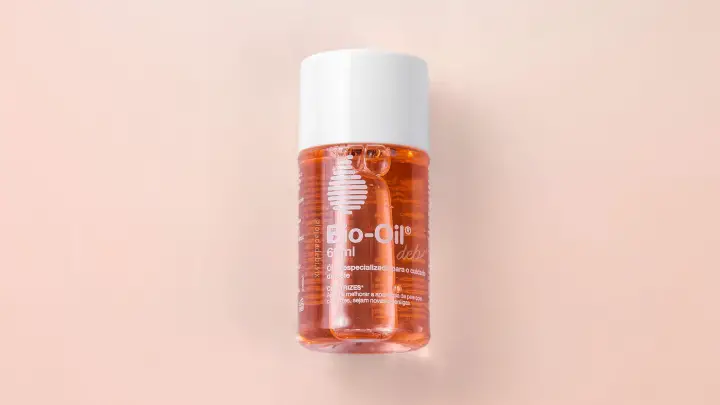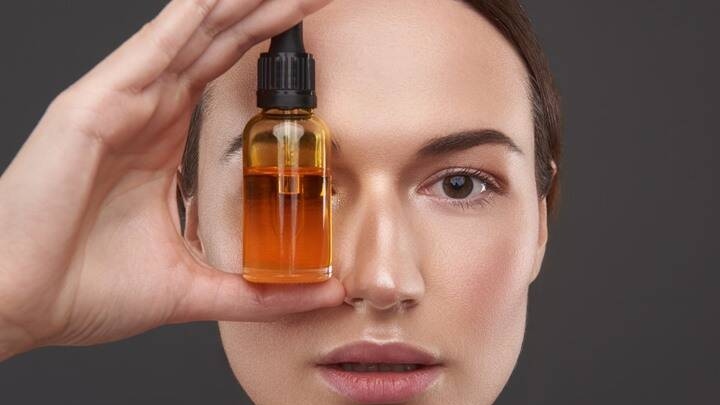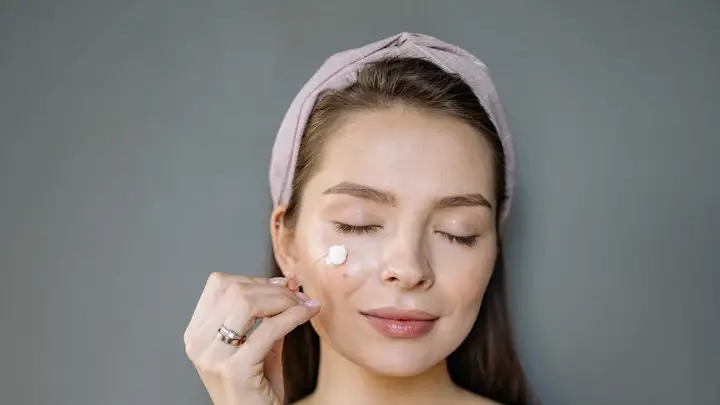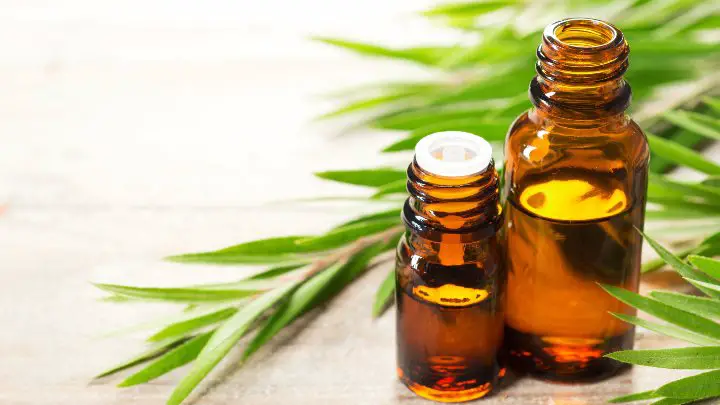Although both skincare ingredients are acids, they are not the same and cannot replace each other. This is the reason why there is a need for the comparison of hyaluronic acid vs glycolic acid.
In the skincare dictionary, hyaluronic acid represents hydration boost, whether it is found in face serums, cleansers, or moisturizers.
On the other hand, glycolic acid is a simple alpha hydroxy acid (AHA) found in cleansers, toners, serums, and some creams. It helps to exfoliate the dead cells from your skin.
Yes, they work together to improve the appearance and texture of your skin but there is a need to properly differentiate them. Your knowledge of their differences and how to use them individually or together will help you get the best of these ingredients.
What Is Hyaluronic Acid?
Hyaluronic acid is a skin hydrator. Any skincare product that contains hyaluronic acid will certainly boost your natural moisture levels and make it look plump. This acid is very suitable for every skin type, especially dry skin.
This acid is a humectant that maximizes sufficient moisture levels in the air. It draws water from your environment, binds to the molecules, and retains them in the inner layers of your skin.
Hyaluronic acid is one of the naturally occurring acids in the human body. Board-certified dermatologist, Fayne Frey, MD, says, “Almost half of the body’s hyaluronic acid is found in the skin”. This fact is why this acid rarely shows any side effects when used through serum or moisturizer.
Aging comes with depleted hyaluronic acid levels. Consequently, the skin loses its natural moisture levels and appears dry with a dull complexion. During this phase of life, hyaluronic acid makes for a good source of a moisture boost and improves your skin’s complexion.
What Is Glycolic Acid?
Glycolic acid is alpha hydroxy acid (AHA) found in exfoliating skincare products. It is naturally occurring in the sugar cane plant. This exfoliating acid helps to fight skin breakouts like acne and fade its scars.
Like a typical exfoliating acid, it sloughs off dead skin cells from the surface of your skin revealing a better and brighter complexion. Conversely, glycolic acid is milder and more suitable for skin acids first-timers. Moreover, when used properly, it acts as a humectant.
Additionally, skin experts advise that you use facial chemical peels that contain glycolic acid. These peels have smaller molecules that penetrate your skin better and produce effective results. Other than fighting off acne, this acid makes a good anti-aging ingredient.
Its exfoliating properties help to reduce the appearance of fine lines and facial wrinkles. Also, it brightens the dull complexion that aging comes with and reveals vibrant, youthful skin.
Comparing Hyaluronic Acid vs Glycolic Acid
One reason why these acids are often mistaken is that both are water-soluble acids and have humectant properties. Besides their separate nature of occurrences and molecular structure, they are quite different from each other.
Although some acids are naturally occurring on your skin, there is a need to incorporate some acids in your skincare routine. The comparison of hyaluronic acid vs glycolic acid will help you identify which acid your skin needs and why.
Their nature
Hyaluronic acid is a carbohydrate that occurs on the human skin. It is also available in the connective and neural tissues of the body. On the other hand, glycolic acid is one of the members of the family of fruit acids.
While both acids have great moisturizing properties, glycolic acid has a greater penetration power. Conversely, the result of using them individually is quite different.
Hyaluronic acid absorbs moisture from the environment and leaves your skin moisturized. Glycolic acid will rather penetrate your pores with its small molecules yet leave your skin dry.
Functions
Hyaluronic acid, a humectant, works to improve overall cell moisture levels and treat skin concerns. These concerns include aging, dry skin, dull complexion, and even acne. However, glycolic acid is a better option when it comes to acne treatment and elimination.
To treat acne, glycolic acid penetrates your skin pores and dissolves clogs that cause skin breakouts. It breaks down the bonds between dead skin cells, oil, and dirt. Afterward, it lifts them off and gives your skin a better appearance.
Hyaluronic acid is your go-to skin acid if you’re looking to improve the appearance of your skin with a moisture boost. Its moisture retention capacity makes up for moisture loss during harsh winter conditions. As a result, your skin does not overcompensate by producing excess oil.
With regular oil levels, you can be sure that acne is kept at bay. Moreover, hyaluronic acid is an excellent wound healer. Its antibacterial properties protect your skin from infections that tend to slow down the wound-healing process. Also, it reduces skin inflammation.
Both acids are great anti-aging ingredients but each functions in a different way. Hyaluronic acid fills in your dermis and smoothens fine lines and wrinkles. Over time, your skin looks plump and rejuvenated back to its youth.
Glycolic acid, on the other hand, sloughs off the dead skin cells that make your skin look scaly and wrinkled. However, glycolic acid can make your skin photosensitive when you do not apply it during the day.
Using either of the acids moisturizes your skin and stimulates collagen synthesis which promotes skin elasticity.
Recommendations for use
Hyaluronic acid is largely tolerated by every skin type. Dry and sensitive skins most especially benefit from the moisture boost and retention properties.
Glycolic acid is best suited for oily and acne-prone skin. It unclogs pores of excess oil, dead skin cells, and grime which are responsible for blackheads and acne. Dr. Corey Hartman, says, “this increases exfoliation and makes skin smoother and more even”.
The exfoliating property of glycolic acid is beneficial for opening your skin to receive the molecules of other products down your routine.
On the other hand, hyaluronic acid helps to draw in the moisturizing ingredient of every other skincare product down your routine. It keeps them locked in and they hydrate your skin.
Furthermore, while you can layer hyaluronic acid with any other acid and skincare ingredients, the same does not apply to glycolic acid. This AHA reveals a sensitive layer of your skin and as such, you need to be careful thereafter.
Glycolic acid should not be layered with another AHA or BHA like salicylic acid and lactic acid. Also, retinol, vitamin C, and niacinamide are other ingredients that do not go well with glycolic acid.
Using glycolic acid and any of these ingredients in your skincare routine is beneficial. However, you should not use them at the same time. Glycolic acid and many of these ingredients have different pH values. So, it can affect the absorption rate of each and render them ineffective.
In addition, it can cause skin irritations like redness and skin breakouts. Pairing glycolic acid with another AHA or BHA can be too exfoliating for your skin.
Also, people battling with or recovering from cancer should stay away from hyaluronic acid. This is because it increases cell turnover and as such, it may cause the reproduction of potentially cancerous cells.
Can You Use Hyaluronic Acid and Glycolic Acid Together?
Yes, you can. As mentioned earlier, both acids are good moisturizers and act as humectants. You can safely layer glycolic acid with hyaluronic acid for a moisture boost and to improve the appearance of your skin.
Hyaluronic acid and glycolic acid work together to promote collagen production to eliminate and prevent the appearance of fine lines and wrinkles.
Also, after the drying effect of glycolic acid, you can follow up with hyaluronic acid to soothe your skin.
For instance, when you use a glycolic acid facial cleanser or chemical exfoliant, it leaves your skin dry and prone to irritations. However, you can avoid this if you follow up with hyaluronic acid face serum or moisturizer.
While your face is still damp, layer a hyaluronic acid product over your face to hydrate your skin and lock in moisture.
Is Hyaluronic Acid Better Than Glycolic Acid?
Comparing hyaluronic acid vs glycolic acid is not to pick the odd one out or suggest the superiority of one to another. Both acids are individually unique and function to even your skin tone and promote skin elasticity.
For different skin types and to address different skin concerns, one acid may override the other and be a better option. In essence, your choice of skin acid should be based on what your skin needs at the time.
FAQs
Should you use hyaluronic acid before glycolic acid?
Use glycolic acid before you apply hyaluronic acid. Glycolic acid is an exfoliator while hyaluronic acid is a hydrator. After exfoliating your skin with glycolic acid (it should be applied to dry skin), you’ll need a hydrator to restore moisture.
Exfoliation can be quite dehydrating and expose your skin to irritations that may lead to skin breakouts. So, glycolic acid is necessary to protect your skin.
Is hyaluronic acid or glycolic acid more effective for acne treatment?
Glycolic acid is a more effective skin acid for acne treatment and prevention when compared to hyaluronic acid. Although a moisture boost can protect your skin from inflammation and overproduction of oil, exfoliation is necessary.
In addition, glycolic acid molecules are smaller, and they penetrate better to address clogged pores. It dissolves the bonds that hold dead skin cells and oil that trigger acne breakouts.
Can you leave glycolic acid on your face overnight?
Yes, you can. Going to bed without rinsing off glycolic acid should not hurt your skin. After using a cleanser or face cream that contains this acid, you can leave it on and rinse it off in the morning.
Over the night, it absorbs into your skin and dissolves clogs that can lead to acne. However, you should remember that you should not over-exfoliate your face. So, you can do this every other evening and follow up with a moisturizer on other evenings.
Conclusion
Skincare can be quite a daunting task. And this is because there are not only products and brands to look out for, but you also have to know your ingredients. Skin acids, most especially, can give you goosebumps on hearing them.
For this reason, you should know their differences and how to use each of them correctly (this is where results lie). Hyaluronic acid vs glycolic acid is a necessary comparison if you will not misplace both. In similarities, they are both moisturizing and good anti-aging ingredients.
However, their unique line of action and other benefits are what differentiates them. And these differences do not suggest that one is better than the other. Know your skin and its needs according to seasons and special conditions.
Individually or together, hyaluronic acid and glycolic acid are effective for maintaining a flawless complexion.
Thanks for reading.
Check Serum101 to read relevant comparison articles that guide you to a perfect skincare routine.






